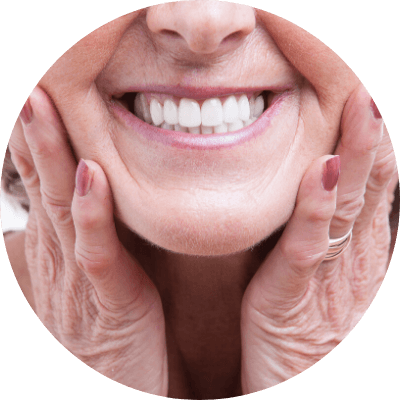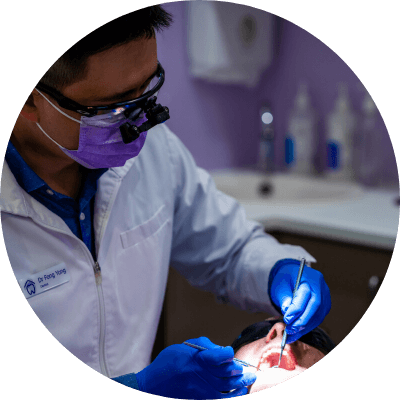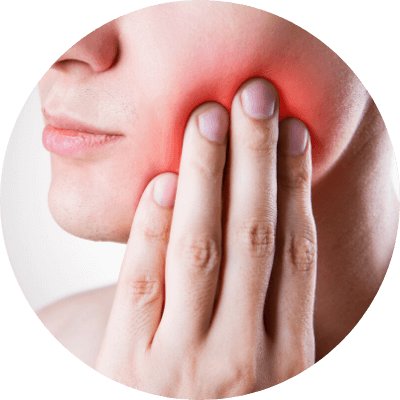How Did Straight White Teeth Become The Beauty Ideal?
How Did Straight White Teeth Become The Beauty Ideal?

As individuals we’re rife with it. While sipping $4 coffees and wearing a t-shirt delivered by Amazon we’ll twitterbleat condemnation of third world labour, the environmental catastrophe of shipping, and the wanton waste of over-consumerism.
Maybe it comes from our teeth. They are indeed a profound contradiction. They are the hardest and most durable part of the human body, and yet remarkably fragile. They can sustain an average repeated bite force of 60kg for decades, and still a popcorn kernel can crack one. Milk teeth form in utero at 6 weeks, permanent teeth at 4 months, and nobody sees any of them for more than a year after that. Permanent teeth don’t get a look in until about six years after they’re made.
450,000-year-old human teeth were recently discovered in the Italian Peninsula, while most of us can’t seem to have ours last a lifetime in our mouth.
Palaeontologists have long understood that teeth are deeply rooted in evolution. Cultural anthropologists are very familiar with the social identity, rituals and beliefs centred around teeth.
Throughout history, tooth filling and inlay techniques have been practiced by various cultures. Semi-precious stones were used by ancient Mesoamerican societies – the modern day countries of northern Costa Rica, Nicaragua, Honduras, El Salvador, Guatemala, Belize, and Mexico. The traditional Balinese Metatah ceremony filed the upper canine teeth of adolescents to complete the transition from animal to human, and as marker of integration into society.
There is evidence of the cultural value of teeth in some African cultures; of a collection of ceremonial masks of various tribes from the 19th and 20th centuries, most exhibited some form of dental modification. These masks were used in male initiation rituals and represented ancestral spiritual links to power, prosperity, and fertility.
Dental modifications have been performed across the ages for beautification, rites of passage, group identity markers, and displays of social status. Among African-American communities and popularised by hip-hop culture, gold crowns and ‘dental grills’ are an indicator of social status. Known as ‘fronts’ or ‘grillz’ they are removable, high-end jewellery for your teeth. Gold crowns are also a marker of pride and wealth in parts of Central Asia and Latin America.
Up until the early twentieth century the intentional blackening of teeth was widespread throughout Southeast Asia, China and parts of South America. It was considered an enhancement for attracting mates; particularly as a means of obscuring the sharpness of canine teeth and the connotations of both animal instincts, and malevolence.
Interestingly, a benefit of teeth blackening may have been cavity prevention, toothache treatment and improved periodontal health. Recent research revealed certain blackening plants having ethno-pharmacological properties, and a high antimicrobial response to Streptococcus mutans, the predominant bacteria that causes tooth decay.

Meanwhile in England, black teeth represented royalty and affluence. With sugar an extremely expensive commodity and Queen Elizabeth I’s extreme fondness for it, her black and decayed teeth gained such popularity that women of the aristocracy deliberately stained their teeth with soot and charcoal.
Historically, options for improved dental aesthetics were of a rather limited nature: extraction, filing to create the illusion of alignment and dentures were basically it until around 1900. It was then that St. Louis dentist Edward H. Angle, whose classifications are still in use, established the first modern orthodontia curriculum.
Famed Australian orthodontist ‘Tick’ Begg recognised a mismatch between jaw length and number of teeth in the 1920s. He found that First Nations peoples living a traditional life wore their teeth down, had perfect dental arches, their front teeth were straight, and their wisdom teeth were fully erupted and functioning – much more so than his European patients.
He reasoned that nature expects wear between adjacent teeth to give space in the mouth, and that a diet of soft foods has upset the balance between tooth size and jaw length.
Begg developed what has long been the benchmark for straightening teeth: extracting the front premolars, bracketing and wiring the remaining teeth, closing the gaps and pulling the dental arch into line.
Orthodontists had used wires to straighten teeth before, but they didn’t extract the premolars: straightened teeth commonly reverted. Dentists initially rebuked the idea of pulling healthy teeth but Begg’s technique worked, and it lasted a lifetime.
(He was right about the discrepancy, but the details were wrong: it’s not our teeth that are too big; it’s our jaw that’s too small.)
Around the same time in the US, what began as an effort to have draftees with poor oral health dentally fit for war service, resulted in bringing prestige to dentists as medical practitioners and a boom for the profession. Orthodontist graduate programs proliferated after World War II, and the US was primed for orthodontics as a common dental treatment.
Although the post-war years brought better oral health practices into daily life, the idea of white teeth had already been advertised since the early 1900s.
From the 1918 S.S. White toothpaste ad, “American Teeth Impress Our British Allies” to the 1924 Pepsodent “Era of Whiter Teeth” and its 1949 “Dorothy Hart’s Smile Wins Six Offers From Hollywood” they’re all messages that white teeth bring glory in times of war, acceptance into high society, and success in love and career.
It’s a black-and-white message we’ve always bought.
The American dental industry experienced a growth rate in the 1950s faster than the economy. Diachronically, the propagation of straight, white teeth can be linked to the rise of the middle class post World War II. Private dental practices flourished with the post-war prosperity of a burgeoning middle class with more disposable income.
All of it was spent on improving social status.
Part of that, was an increase in the proportion of schoolchildren receiving private dental care. Over the past two decades in North America alone, 80% of teenagers have an orthodontist, with the recommendation for a first visit now at age seven.
Over time, we’ve literally gone from black to white. Certainly parallels can be drawn: blackening was for exactly the same reason as whitening now. The motives for filing are no different to those of straightening. In the broader context of socio-culture, modified teeth are linked to the social structure of identity, and within that the ideal self. Straight white teeth are bordering on a racist idiom as well as class semantics.
Ultimately, what someone thinks of your teeth matters less than what you think of your teeth.
Pragmatically, teeth are simply an anatomical feature of the human body. Yet they are inscribed with evolutionarily preferences, genetic histories, social values and cultural norms. They are a reflection of contemporary beauty values. In addition to that, positive and negative projections, perceptions and uniquely personal emotions attach to the aesthetics of them.
Teeth undoubtedly comprise symbolic value. They are integral to proper nourishment, communication and expression. They are a common subject of dreams. The physical, ethereal, ancestral, and psychological all intertwine in the relationship we have with our teeth.
There’s cognitive dissonance rooted in that.
DISCLAIMER:
The content has been made available for informational and educational purposes only. New Gisborne Dental House does not make any representation or warranties with respect to the accuracy, applicability, fitness, or completeness of the content.
The content is not intended to be a substitute for professional personal diagnosis or treatment. Always seek the advice of your dentist or another qualified health provider with any questions you may have regarding a dental or medical condition. Never disregard professional advice or delay seeking it because of something you have read or seen on the Site.














